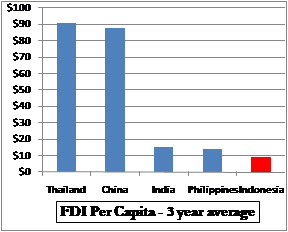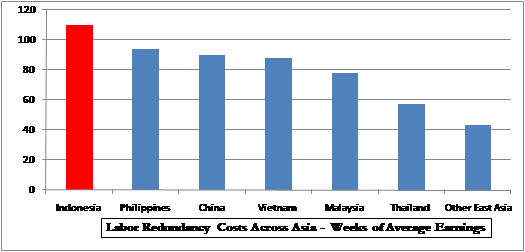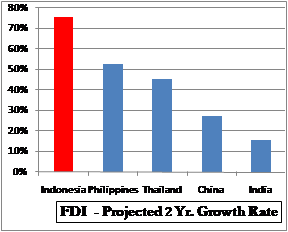Kuroto Fund, L.P. - Q4 2009 Letter
Dear Partners and Friends,
PERFORMANCE & PORTFOLIO
Kuroto Fund, L.P. appreciated 7.4% in the fourth quarter and was up 78.0% for the 12 month period ended December 31, 2009.
The Indonesian Investment Opportunity
Like much of the developing world, Indonesia is young and growing. With 5% annual GDP growth in recent years, the world’s largest Muslim country is among the fastest growing and most resilient nations in Asia. Surprisingly however, this impressive expansion has yet to translate into a rising standard of living for the average citizen. In fact, Indonesian real wages have fallen by almost 2% per year since 2002.
The disparity between GDP and income growth over the past decade is principally a result of the changing composition of Indonesia’s GDP. While increased exports—largely palm oil, coal, and other resources from the country’s outer islands—have spurred economic activity, the increase has yet to translate into broad based growth in purchasing power. Moreover, absent growth in real wages or expanding consumer credit, individuals are simply unable to boost their discretionary spending. Our company specific work has borne out these personal income statistics time and again. For the better part of the past decade, we’ve observed Indonesian consumers with little incremental money for discretionary items like apparel and personal care products.
The failure of Indonesian wages to grow is in large part due to a shortage of capital and a corresponding lack of investment. Amazingly, despite its size and abundance of resources, Indonesia has almost completely avoided foreign direct investment (FDI) inflows into the region. Over the past five years, Indonesia has received amongst the lowest level of FDI in Asia, a woeful 0.5% of GDP per year. Indonesia has also failed to attract much new capital into its stock market, and it doesn’t have the domestic savings rate to generate sufficient capital formation without foreign flows.
How was it possible for Indonesia not to garner a meaningful fraction of the monies heading into China and India? For starters, the country’s unfriendly business environment doesn’t help. Indonesia’s weak legal rights, bureaucracy, and poor policy made it a relatively unfriendly place for outside investors. Furthermore, restrictive labor laws have proven particularly problematic. Indonesia has lower wages than neighboring countries like Vietnam, Thailand, and the Philippines, but much higher labor redundancy costs—which makes it less competitive on an overall basis.
Encouragingly, the worst figures look to be behind us, as Indonesia is expected to see the best improvement in FDI in Asia over the next two years. These strong projections can be traced back to improvements in Indonesia’s openness to offshore oil and gas exploration as well as a push for enterprise zones free from the restrictions that have historically deterred FDI. While not the wholesale change in law we would have preferred to see, Indonesia is clearly moving policy in the right direction
In addition to increasing FDI, consumer credit continues to pick-up. Mortgage financing, which is still just 2.7% of GDP, is projected to more than double over the next four years.[1] More capital coupled with continued strong GDP growth should finally start to create an Indonesian middle class. To wit, the Boston Consulting Group projects a 43% increase in the Indonesian middle class and a 12% decline in those living below the poverty line over the five year period ending in 2012.
We expect our Indonesian holdings, all of which are domestically focused, to benefit substantially from the rise of the Indonesian middle class. That said, and as the past six years prove, our Indonesian consumer-oriented investments can perform well whether Indonesia’s domestic consumption story comes to fruition or not. We own well-managed, competitively advantaged businesses that are currently selling at discounts to their intrinsic values. The after-tax ROA of our consumer businesses, excluding excess cash, is 22%. And, our finance businesses generate an after-tax ROA of 5.6%. Furthermore, we are projecting a 24% annualized growth rate for our Indonesian holdings over the next two years. Despite these solid fundamentals, our Indonesian companies are trading at a look-through PE of just 10.2 times this year’s estimated earnings and generating a dividend yield of 3.6%. With our 20% country weighting, we are extremely well positioned to benefit from the pending emergence of the Indonesian consumer.
Sincerely,
Sean Fieler
William W. Strong
ENDNOTES
[1] CLSA













